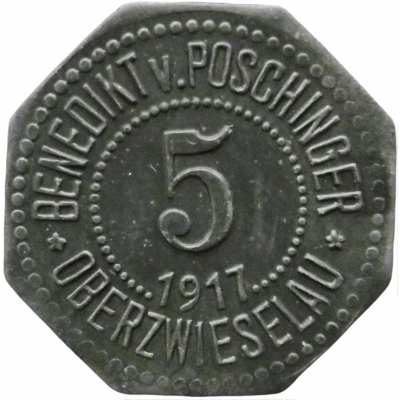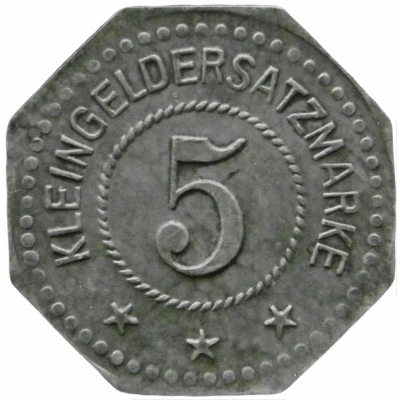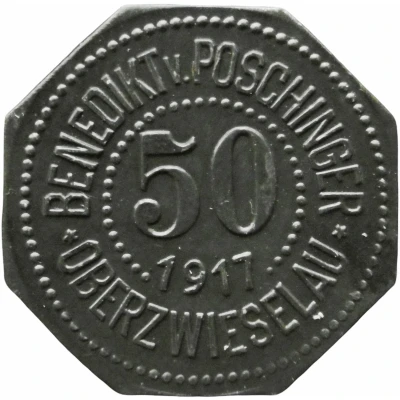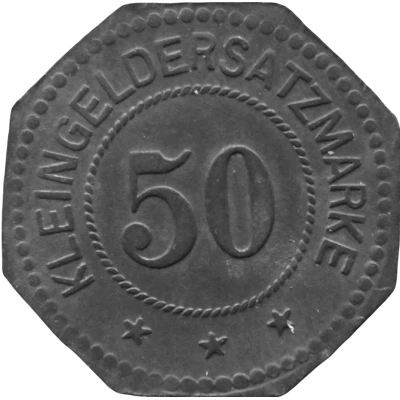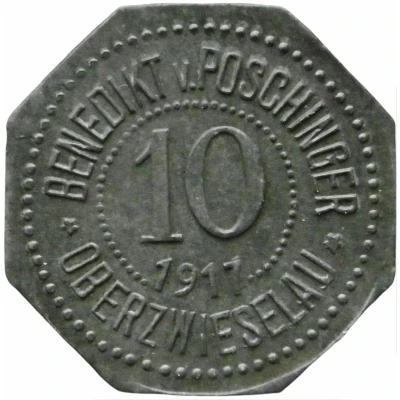


© Willem63 (CC BY-NC-SA)
10 Pfennigs - Oberzwieselau Benedikt v. Poschinger
1917 year| Zinc | 1.9 g | 20.8 mm |
| Issuer | Municipality of Oberzwieselau (Federal state of Bavaria) |
|---|---|
| Emperor | William II (Wilhelm II) (1888-1918) |
| Type | Standard circulation coin |
| Year | 1917 |
| Value | 10 Pfennigs (10 Pfennige) (0.10) |
| Currency | Mark (1914-1924) |
| Composition | Zinc |
| Weight | 1.9 g |
| Diameter | 20.8 mm |
| Thickness | 1.0 mm |
| Shape | Octagonal (8-sided) |
| Technique | Milled |
| Orientation | Medal alignment ↑↑ |
| Demonetized | Yes |
| Updated | 2024-10-04 |
| Numista | N#289925 |
|---|---|
| Rarity index | 97% |
Reverse
Pearl rim, legend surrounding beaded circle with denomination centered
Script: Latin
Lettering:
KLEINGELDERSATZMARKE
10
★ ★ ★
Edge
Plain
Comment
Menzel: BBBFa: Glasfabrik
Interesting fact
One interesting fact about the 10 Pfennigs - Oberzwieselau (Benedikt v. Poschinger) 1917 coin is that it was issued during a time of economic turmoil in Germany. The country was experiencing hyperinflation, and the value of the German mark was rapidly decreasing. In response, many municipalities, including Oberzwieselau, began issuing their own local currencies, like this coin, to serve as a stable alternative to the national currency. This coin, made of zinc and weighing 1.9 grams, was one of the many local currencies issued during this time, and it remains a unique and interesting piece of numismatic history.
